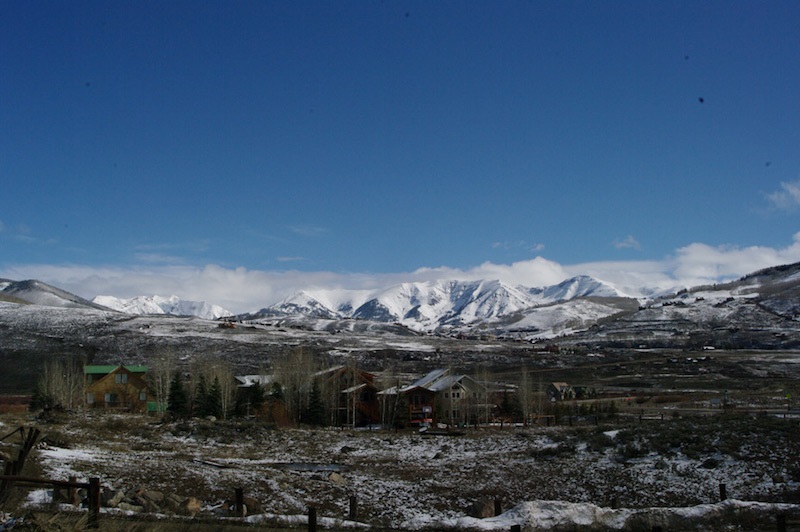Many first-time visitors to Colorado anticipate seeing a state consisting mostly of mountains. This impression is understandable; it is the eighth largest state, at 104,247 square miles, with 54 mountain peaks over 14,000 feet and over 1,000 exceeding 10,000 feet. However, one of its most striking features is its vast complex of plains and prairies. In fact, the eastern plains of Colorado comprise 42% of the state’s area. Because of its wide variety of habitats, and its unique location in the centre of the continent with respect to migration routes, Colorado is a premier birding destination.
Those intending to bird throughout the state should plan on doing a lot of driving; it is about 276 miles from Wyoming to the north to New Mexico to the south, and 387 miles from Kansas and Nebraska to the east to Utah to the west. In recent years, Colorado’s birds and other wildlife have come under increasing pressure as the population has increased by more than 50% in the past thirty years to over 5 million.
Colorado is best visualized as consisting of three distinct geographic subdivisions. Within these three general areas there are literally hundreds of good birding localities. Consequently, it is highly recommended that birders unfamiliar with Colorado utilize A Birder’s Guide to Colorado, [see below] to clarify the details of particular localities.
The Eastern Prairies – The eastern part of the state is made up of c.43,000 square miles of rolling prairies. Most of this area was once short-grass prairie habitat, but agricultural use now dominates the landscape. This part of the state features two major drainage systems. The South Platte River emerges from the Front Range of the Rocky Mountains at Waterton Canyon, south of Denver, and flows northeast to Nebraska. The Arkansas River leaves the mountains at the Royal Gorge, at Canon City, and flows east into Kansas. Along the courses of both rivers are many large lakes and reservoirs; some of the best birding destinations in this part of the state.
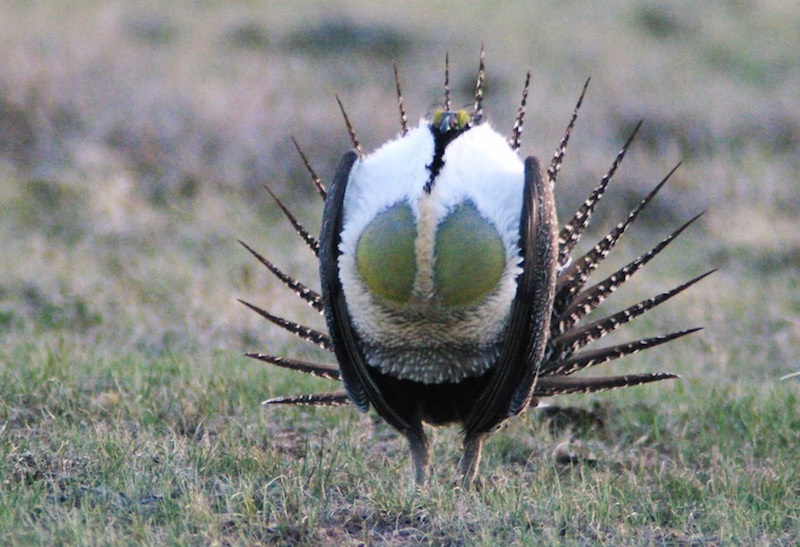
The capitol city of Denver is situated on the western edge of the plains, adjacent to the Front Range of the Rocky Mountains. There is plenty of good birding in the Denver area, including Chatfield Reservoir, Cherry Creek Reservoir and Castlewood Canyon State Parks. Exiting Denver to the northeast, Interstate 76 follows the South Platte River across the plains. North of the South Platte River lies the vast (193,000 acres) expanse of the Pawnee National Grasslands, a popular destination for viewing prairie bird species such as Mountain Plover and Chestnut-sided and McCown’s Longspurs. Crow Valley Campground on the Pawnee Grasslands is one of many migrant traps found on the plains where lakes and moist drainages enable stands of trees to survive on the otherwise treeless prairie.
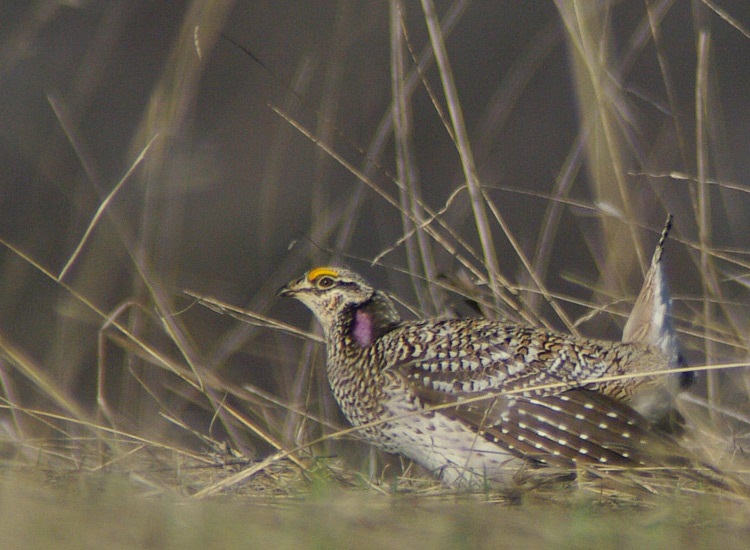
Other prime birding locations along the I-76 corridor include Barr Lake and Jackson Lake (known for its extensive mudflats and large shorebird populations in the fall) State Parks, Canfield Park in Fort Morgan, and Brush, Prewitt Reservoir, Tamarack Ranch, Red Lion and Jumbo Reservoir State Wildlife Areas.
To the south and east, along the Kansas state line, are the town of Wray, known for its Greater Prairie-chicken leks, and Bonny Reservoir State Park, another excellent migrant trap. There is equally good birding along the Lower Arkansas Valley between Pueblo and Lamar. Popular birding spots include Lakes Henry, Meredith, Cheraw and Holbrook, Rocky Ford State Wildlife Area, and the Comanche National Grasslands, south of La Junta. Found adjacent to these grasslands are the Picket Wire Canyon-lands and the Purgotoire River. In addition to the specialty birds of the area, such as Curve-billed Thrasher, Cassin’s Kingbird, Black-throated and Rufous-crowned Sparrows, Golden Eagle and Canyon Wren, here one can see the most extensive exposed set of dinosaur tracks in North America.
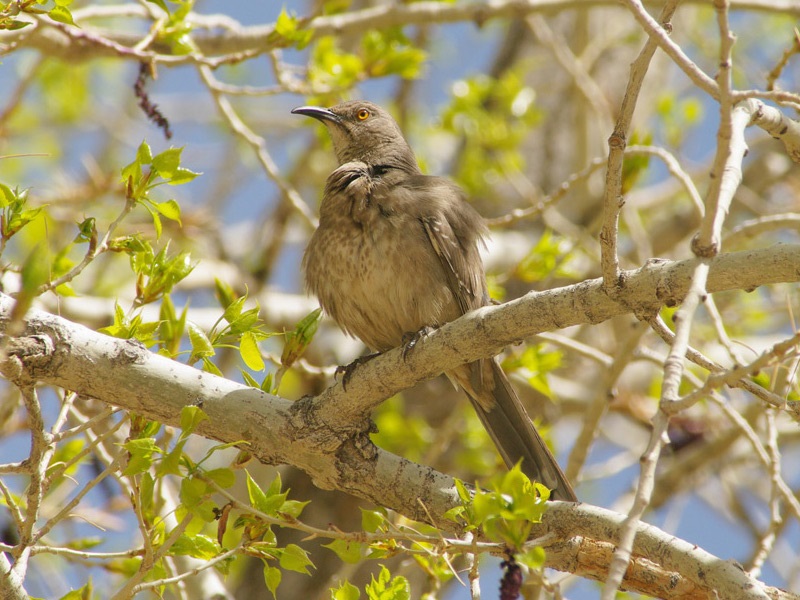
Near the New Mexico/Oklahoma border is Cottonwood Canyon, where such south-western species as Greater Roadrunner, Painted Bunting and Ladder-backed Woodpecker may be found. East of Cottonwood is Campo, one of the few dependable Colorado locations for Lesser Prairie-chicken. Further downstream along the Arkansas River are additional excellent birding localities: John Martin Reservoir, the Fort Lyon Wildlife Easement, the Indian reservoirs of Nee So Pah, Nee Noshe, Nee Gronde and Nee Skah, and the Lamar Community College woodlands.
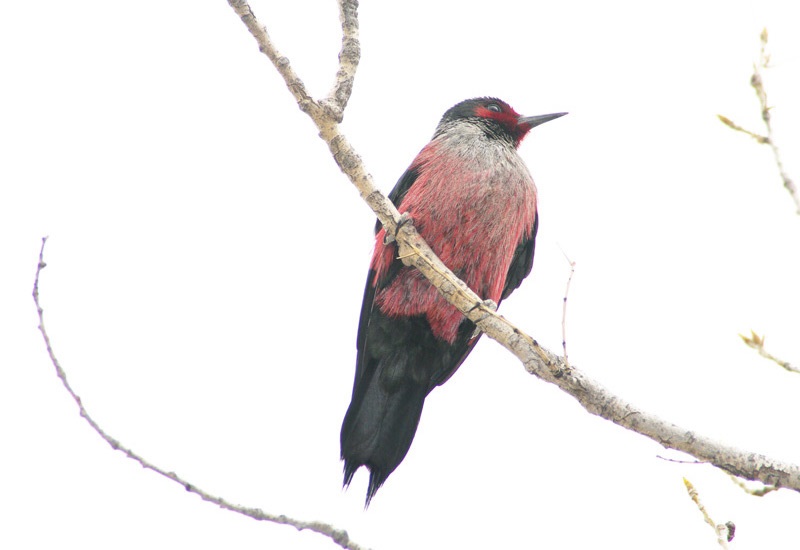
The West-central Mountains – The west-central part of Colorado is its most mountainous area. The Continental Divide passes along the crests of several of the many mountain ranges that make up this part of the state, and divides the state into the eastern slope and western slope.
On the eastern slope is Rocky Mountain National Park, famous for its variety of mountain species including Gray Jay, Clark’s Nutcracker, Three-toed Woodpecker and White-tailed Ptarmigan. Guanella Pass, near the old silver mining town of Georgetown, is another well-known locality for the ptarmigan. Enclosed within the numerous mountain ranges that make up the backbone of the Rocky Mountains are four high valleys, or parks. The northernmost of these, North Park, includes Arapahoe National Wildlife Refuge, and much of the best habitat for several of Colorado’s much-sought-after grouse species, including Sage and Dusky Grouse. To the south are Middle Park, South Park, and the San Luis Valley. Hard against the east side of this valley, at the foot of the majestic Sangre de Cristo Mountains is found the spectacular Great Sand Dunes National Park. Just east of the Dunes are the Alamosa and Monte Vista National Wildlife Refuges, where the Gray’s Lake Sandhill Cranes congregate to rest and feed on their northward migration every March. Farther west in this mountainous central region is the Black Canyon of the Gunnison National Park, a good area to see Dusky and Gunnison Sage-grouse.
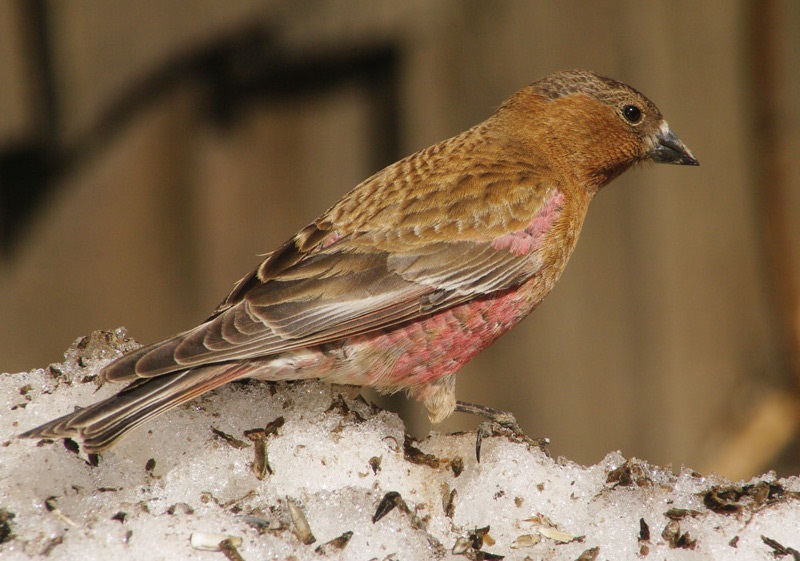
Western Plateaus, Mesas and Canyons – The western third of Colorado is made up of plateaus, mesas and canyons. Geologically, it lies partially on the Colorado Plateau, and closely resembles the canyon country of Utah. The incursion of arid habitat and desert topography into the west and northwest parts of the state results in the presence of many desert bird species not found at corresponding latitudes in the eastern part of the state. In the northwest corner of Colorado is the fantastic canyon complex of Dinosaur National Monument, along the Yampa River, a great place to see Ferruginous Hawk, Golden Eagle, Prairie and Peregrine Falcons, and other raptors. A few miles to the east, near Craig and Hayden, are leks where Sharp-tailed and Sage Grouse may be seen. In west-central Colorado, the Colorado River joins the Gunnison River at Grand Junction, and forms the mighty river system, which carved the Grand Canyon of Arizona and eventually finds its way to the Gulf of Mexico. Southwest of Grand Junction is Colorado National Monument, a maze of chasms home to desert specialties such as Gambel’s Quail, Black-chinned Hummingbird, Scott’s Oriole, Gray Vireo, Gray Flycatcher and Pinyon Jay. Nearby is Grand Mesa, known for its variety of owls.
Moving to the southwest corner of the state, adjacent to the magnificent and historic San Juan Mountains, we find Mesa Verde National Park. In this park and other nearby areas are found Black-throated Gray and Grace’s Warblers, and Black Swift.

Birding in Colorado – Birding in Colorado is excellent year-round. The variety of terrains and habitats is virtually unlimited, from the arid canyons of the west to the lush wetlands of the mountain parks, and from the short-grass prairies of the east to the rocky tors high above the timberline. The birds are as varied as the landscapes, and almost anything is possible. Come prepared for the extremes of weather at all seasons, and you will have a truly memorable experience!
Here are some of the best birding locations:
Arapahoe National Wildlife Refuge (Map)
Arapaho National Wildlife Refuge (NWR), situated at an elevation of 8,200 feet, is located in an intermountain glacial basin in north-central Colorado. The Refuge offers several ways to enjoy the area, including activities such as fishing, hunting, wildlife observation, and photography…
Three hundred and five bird species frequent Chatfield either as permanent residents or migrators: the Chatfield Bird List is available for birdwatchers. From south of the Denver metro area Santa Fe (Highway 85) to Titan Parkway (approximately 14.6 miles north of Castle Rock). West on Titan to Roxborough Park Road. Take a right on Roxborough Park Road which leads directly into Chatfield State Park…
Mention Arapahoe County to almost any birder in Colorado, and this is the site that comes to mind. It has a well-deserved place among the triumvirate of metro area reservoirs (along with Barr Lake and Chatfield). Cherry Creek’s main strength seems to be gulls. Just about every species reported in the state has been seen here, many of them more than once. Large flocks of waterbirds often grace the lake, and uncommon and rare species such as Long-tailed Duck, all three scoters, Red-throated Loon and Red-necked Grebe occur with some frequency. Super rarities that Cherry Creek has to its name include Arctic Loon, Iceland, Little, Glaucous-winged, and Great Black-backed Gulls, and Golden-crowned Sparrow…
Colorado National Monument (Map)
Close to the western boundary of the state. For millions of years, erosion has cut into the edge of the Uncompahgre Plateau, creating corridor-like canyons. These canyons are lined by sheer cliffs and towering monoliths and separated by pinyon-juniper mesas. This rugged terrain, along with the arid, semi-desert climate, provides a highly varied habitat for birdlife found in the Monument…
John Martin Reservoir & Lake Hasty (Map)
A prime birdwatching location (Bent County, southeast Colorado has been documented to have over 400 different species of birds…
Jumbo and Red Lion Reservoirs (Map)
(far northeast)
Pawnee National Grasslands & Crow Valley Campground (Map)
Pawnee National Grassland is located in northeastern Colorado, near the town of Briggsdale in northeast Colorado. This is one of the main breeding grounds in the world for Mountain Plovers. The Chalk Bluffs area is habitat for many raptor species…
Prewitt Reservoir State Wildlife Area (northeast) (Map)
In the northeast corner of the state – this is one of the very few State Wildlife Areas that charge an entrance fee. The SWA is comprised of two basic habitats: the extensive riparian habitat below the dam, and the reservoir with its associated mudflats.
Rocky Mountain National Park (north central) (Map)
Plan your visit and come experience this priceless jewel, Rocky Mountain National Park in northern, central Colorado. Catch the glint of Rocky’s many facets: the brief morning alpenglow on a peak, a glimpse of a wary wild creature in the brush, the sun sparkling in a stream, the glory of a mountain sunset, the solitude of a trail less traveled, the splendor of the starscape free of man-made light, the exhilaration of looking over the clouds, the uplift of birdsong from the branches, the haunting night music of howling coyotes and bugling elk…
San Luis Valley & Great Sand Dunes National Park (Map)
On the eastern side of the remote, high-mountain San Luis Valley, between the Blanca Massif and Crestone Needle, are the Great Sand Dunes, the tallest sand dunes in North America. The dunes cover approximately 39 square miles and rise to almost 750′ above the valley floor…
Tamarack Ranch State Wildlife Area (northeast) (Map)
This enormous and varied SWA is probably among the top ten SWAs in Colorado, and certainly not a spot to be missed during the summertime. Tamarack can be frustrating to bird thoroughly, especially the eastern portion where there are multiple large hedgerows that take a lot of time to check, and any of which could be hopping or dead. Northern Cardinal has been seen here, and White-throated and Harris’s Sparrows are possible during the winter. Ring-necked Pheasant, Bell’s Vireo, Yellow-breasted Chat, Blue Grosbeak, Field Sparrow (especially in the surrounding grassland) and Baltimore Oriole are possible during the breeding season…
Major Source: Fatbirder
Map Source: Googlemaps™
Photo Source: © Birding Ecotours

